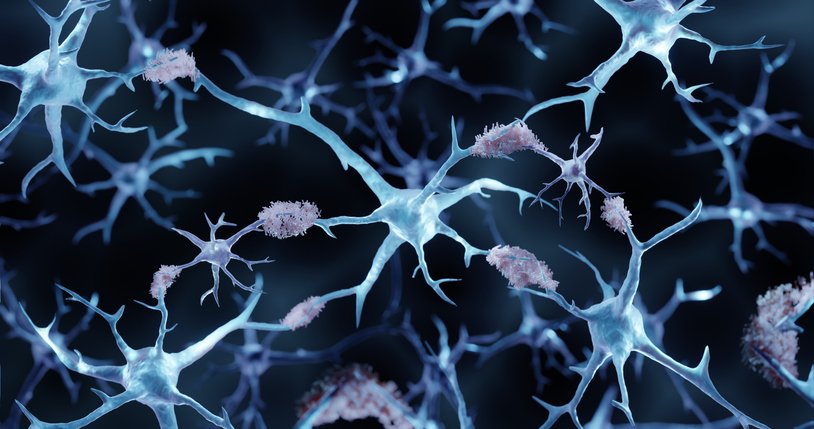Amyloid beta is a peptide that plays a central role in the neurodegenerative pathology of Alzheimer’s disease by aggregating into plaques in the brain. U.S. Food and Drug Administration (FDA) approved drugs, lecanemab and donanemab, both act by lowering amyloid aggregates. However, the limited clinical benefits for Alzheimer’s patients suggest the presence of alternative disease mechanisms. Proteomic profiling of Alzheimer’s disease brains has identified numerous understudied proteins that are highly upregulated with amyloid beta from the early disease stage, but their roles in disease progression are not fully understood.
In a new study published in Nature Structural & Molecular Biology titled, “Midkine attenuates amyloid-β fibril assembly and plaque formation,” researchers from St. Jude Children’s Research Hospital have shown that the protein midkine plays a preventative role against Alzheimer’s disease by attenuating amyloid beta.
Midkine is a multifunctional growth factor protein that plays a significant role in various biological processes, including development, inflammation, and cancer. Midkine is one of the most correlated proteins with amyloid beta in the proteomic analysis of postmortem human brain tissues of Alzheimer’s.
The mitigation of amyloid fibrils in the presence of midkine was shown by thioflavin T, a fluorescent sensor for amyloid beta assemblies, circular dichroism, negative-stain electron microscopy, and nuclear magnetic resonance analyses. Specifically, midkine interferes with specific stages of amyloid beta aggregation by inhibiting elongation and secondary nucleation. Global fitting of kinetic data revealed best fit with the secondary nucleation model, suggesting that midkine mainly targets this pathway.
“Once the amyloid beta assemblies grow, the signal becomes weaker and broader until it disappears because the technique can only analyze small molecules,” said Junmin Peng, PhD, director of the Center for Proteomics and Metabolomics at St. Jude and co-corresponding author of the study. “But when we add in midkine, the signal returns, showing that it inhibits the large assemblies.”
Knockout of the Mdk gene, which codes for midkine, increased amyloid formation and microglial activation in the brain. Mass spectrometry-based profiling of the whole proteome in these mouse models indicated significant accumulation of amyloid beta and amyloid beta-correlated proteins, along with microglial components.
In addition to midkine’s role in inhibiting amyloid beta assembly, the protein also functions as a growth factor that promotes neurite outgrowth and cell survival. Notably, midkine has been shown to interact with several membrane receptors, including low-density lipoprotein receptor-related protein 1 (LRP1), which is a receptor for the risk factor APOE in Alzheimer’s development.
The suggested protective role of midkine opens a potential avenue for neurological disease drug discovery. Further research is needed to examine the interactions between amyloid beta and midkine at the atomic level to provide mechanistic insight for the rational design of therapeutic strategies.
“We want to continue to understand how this protein binds to amyloid beta so we can design small molecules to do the same thing,” said Peng. “With this work, we hope to provide strategies for future treatment.”
The post Amyloid Attenuated by Midkine Protein in Alzheimer’s Mouse Model appeared first on GEN – Genetic Engineering and Biotechnology News.




